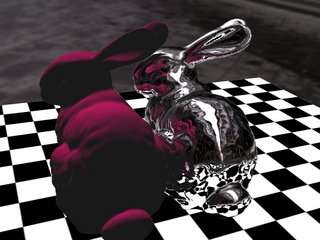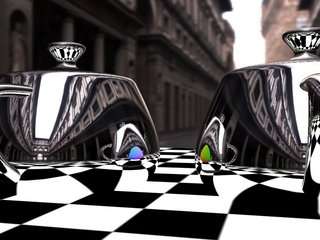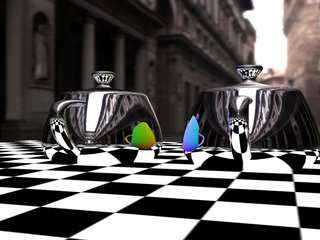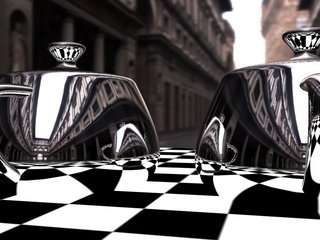What the occlusion camera brings to the table is the ability to store more depth information from the diffuse object. It does this by distorting rays such that we can sample the top and bottom of the diffuse object, where if we were to use a regular camera we wouldn't capture these areas. Yes, kind of vague and hard to visualize without pictures, but those will come in due time. It's a really cool topic of research that I will discuss in more depth once we submit our paper to the Eurographics Symposium.
But for now I'll leave you with some pictures of some early work that I did as a prerequisite for the research. Also, in the coming days (read- after our paper deadline) I will post a tutorial on using billboard impostors for reflections in XNA.
A reflected bunny with correct intersections


3rd order and 2nd order reflections showing the impostor normals


2nd order reflections

3 comments:
What FPS rate are you getting?
We get about 30 fps for 1st and 2nd order reflections. However, this is unoptimized.
Nice effect, I like the rabbit too..
Post a Comment